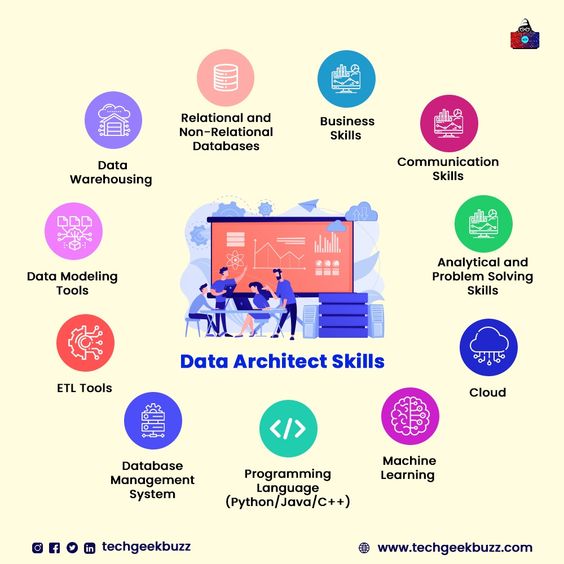Data architecture plays a critical role in ensuring the efficient and effective use of an organization’s data. A data architect is responsible for designing, building, and maintaining the data architecture of an organization. To become a successful data architect, you need to have a strong understanding of data modeling, database management systems (DBMS), data integration, and data security. In this article, we will discuss the roadmap to becoming a successful data architect.
Understanding Data Fundamentals
To become a successful data architect, it is essential to have a strong understanding of data fundamentals. This includes understanding the different types of data, data models, and data normalization techniques. You need to know how to design, implement, and manage data effectively.
We Recommend the Following FREE Courses:
Oracle SQL Basics
Developing Applications with SQL, Databases, and Django
Learning Data Modeling
Data modeling is the process of creating a conceptual, logical, and physical representation of data. As a data architect, you need to have a strong understanding of data modeling and know how to use it to design and build data architecture. This includes creating data models, defining relationships, and ensuring data integrity.
We Recommend the following FREE Courses:
Advanced Data Modeling
Modeling Time Series and Sequential Data
Database Management Systems (DBMS)
A database management system (DBMS) is software that manages the storage, organization, and retrieval of data in a database. As a data architect, you need to have a strong understanding of DBMS and know how to use it to design and build data architecture. This includes selecting the right DBMS, designing database schemas, and optimizing database performance.
We Recommend the following FREE Courses:
Fundamentals of Database Systems
Fundamentals of Big Data
Fundamentals of Data Warehousing
Data Integration
Data integration is the process of combining data from different sources into a unified view. As a data architect, you need to have a strong understanding of data integration and know how to use it to design and build data architecture. This includes defining data integration requirements, selecting data integration tools, and designing data integration solutions.
We Recommend the following FREE Courses:
Talend Data Integration Certification Preparation
Calculus through Data & Modelling: Integration
Data Security and Privacy
Data security and privacy are critical aspects of data architecture. As a data architect, you need to have a strong understanding of data security principles and know how to implement them effectively. This includes managing user access and permissions, securing data backups, and implementing encryption and other security measures.
Data, Security, and Privacy
Cloud Data Security
Data Governance
Data governance is the process of managing the availability, usability, integrity, and security of the data used in an organization. As a data architect, you need to have a strong understanding of data governance and know how to use it to design and build data architecture. This includes defining data governance policies, ensuring compliance with data regulations, and enforcing data quality standards.
Cloud Data Architecture
Cloud computing is becoming increasingly popular, and many organizations are moving their data architecture to the cloud. As a data architect, you need to have a strong understanding of cloud data architecture and know how to design and build data architecture in a cloud environment. This includes understanding cloud data architectures, security, and performance tuning.
Continuous Learning
Data architecture is a constantly evolving field, and as a data architect, you need to keep up with the latest trends and technologies. Continuous learning is essential for staying up-to-date with new data management tools, data security threats, and cloud data architecture trends.
Conclusion
Becoming a successful data architect requires a range of skills, including technical knowledge, data modeling, DBMS, data integration, data security, and data governance. By understanding data fundamentals, learning data modeling, DBMS, and data integration, and continuously learning, you can become a successful data architect. Remember that data security and privacy, data governance, and cloud data architecture are critical aspects of data architecture.


